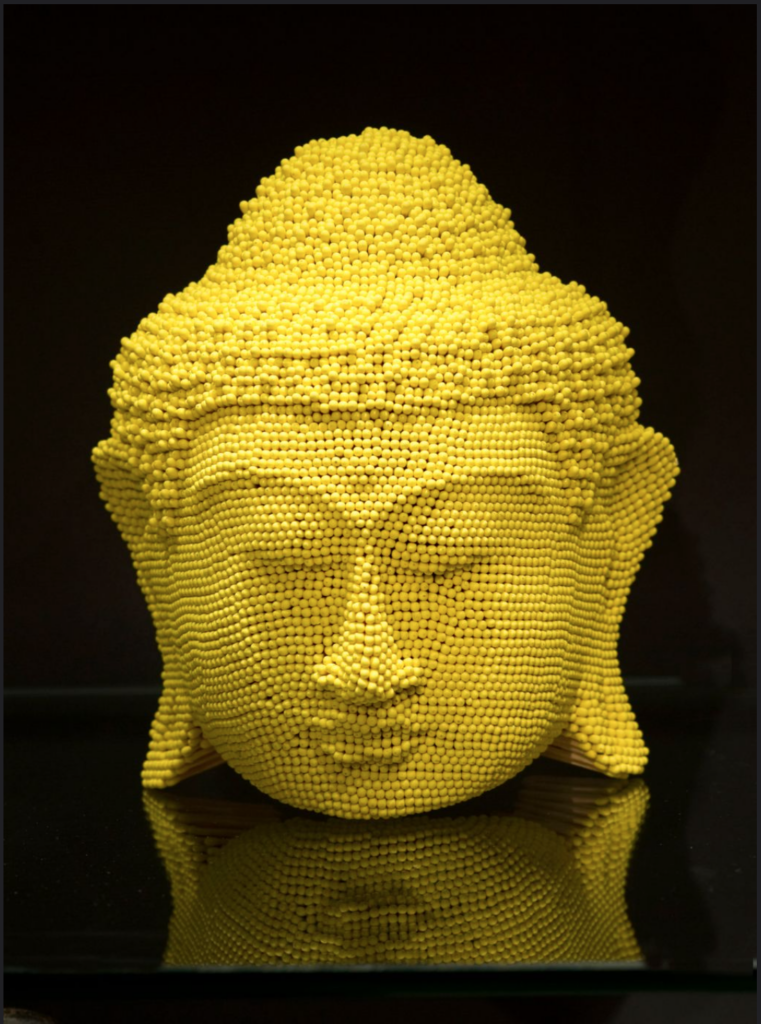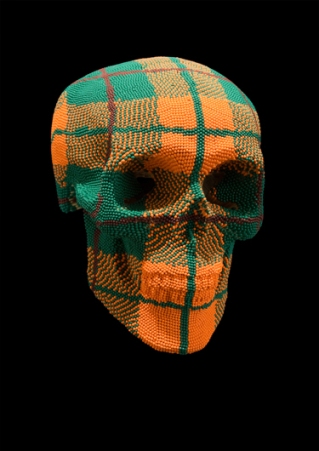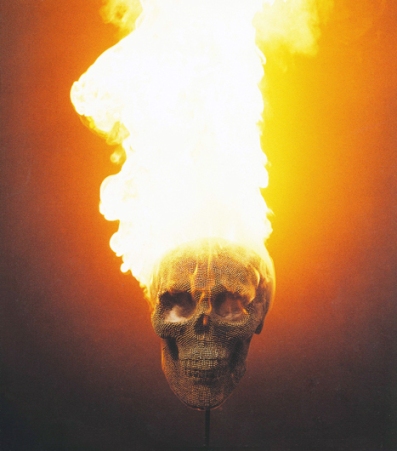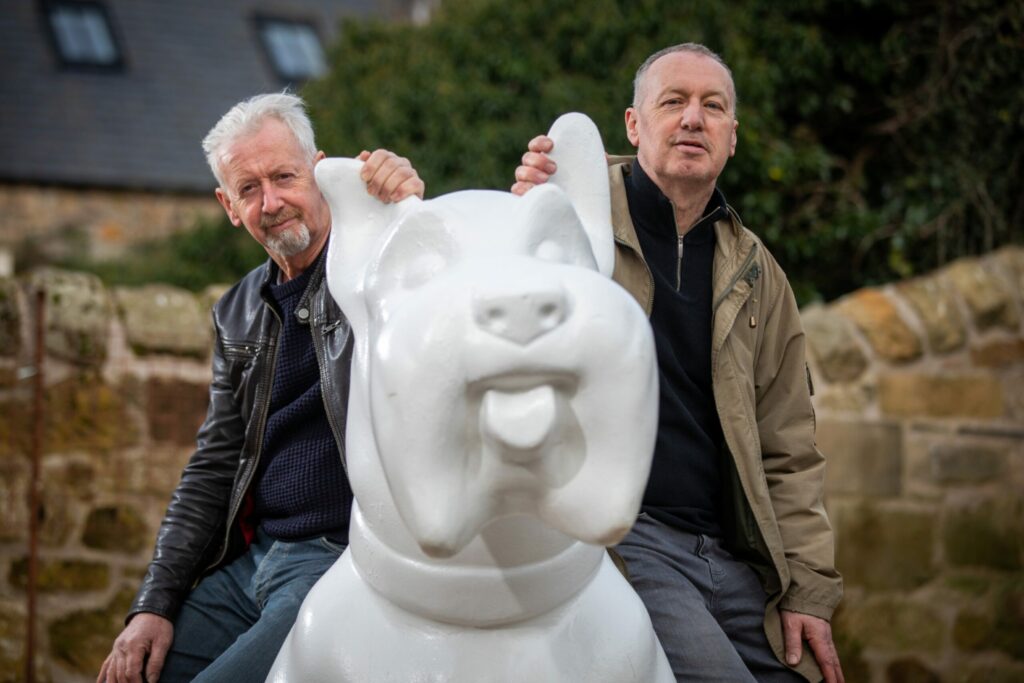David Mach was born on 18th March, 1956 in Fife. He attended Duncan of Jordanstone College of Art, specialising in sculpture to challenge both his intellectual and physical artistic skills. For his postgraduate studies, he went on to attend the Royal College of Art. Following a solo exhibition held at the Lisson Gallery in London in 1982, he quickly established his international reputation; since then, he has exhibited all over the world including New York, Melbourne, Hong King, and Warsaw. His achievements include a nomination for the Turner Prize in 1988 and becoming a member of the Royal Academy of Arts in 1998. Today, he is regarded as one of the UK’s most respected artists, specialising in sculpture and installation art created from mass-produced objects such as magazine, newspapers, and matchsticks. Although the subjects of his sculptures often come from pop culture, his work is not intended to be interpreted as social commentary.

Titled “Match head: Buddha in Yellow” (2007), this matchstick sculpture was created by Scottish artist David Mach, and is currently on public display at the Wardlaw Museum as part of the Harry and Margery Boswell Collection.
The Harry and Margery Boswell Collection was inaugurated by Margery Boswell in 1995, in memory of her late husband Harry Boswell. The Boswell family came from the United States to Scotland to embark on the project of the restoration of their ancestral home. Throughout the project, Harry began to acquire works by leading modern Scottish artists. The Boswell family gifted an endowment to the University with the purpose of acquiring Scottish art, honouring the couple’s memory and Harry’s passion for Scottish art. Today, the Collection contains works by notable artists such as Pat Douthwaite, J.D. Fergusson, and Elizabeth Blackadder.
“Buddah in Yellow” is part of Mach’s matchstick sculpture series which began in the 1980s. His early sculptures were of human or animal heads, and since then has created sculptures of both real and fictional characters, including Betty Boop, Charlie Chaplin, and Marilyn Monroe. The National Gallery of Scotland is one of many art institutions that include his sculptures in their collections. The sculpture in question depicts “The Buddha”, also known as Siddhartha Gautama, who was a wandering ascetic and religious teacher from South Asia who lived from sixth or fifth centuries BCE.
To create his matchstick sculptures, Mach first designs a form made of plastic and then makes an identical one in clay. Thousands of colourful matchsticks are then inserted at various depths to create an intricate three-dimensional sculpture. He uses Japanese matchsticks for his sculptures because their heads come in all sorts of different colours. Looking at his other sculptures, Mach is seen using several colours for one sculpture but also just using one colour for an entire sculpture, such as the Buddha head. He relies on his ability to create depth in certain parts of the face so that basic features- the eyelids, eyebrows, nose, and lip-all slightly protrude. The intricate detailing of the Ushnisha, or crown of hair, at the top of the head of the Buddha speaks to Mach’s careful attention to placement and depth so that his sculpture resembles the popular icon. The matchsticks are placed so tightly that you can barely see the gap between the heads; if you were to stand far away from the sculpture, it would look completely solid.


Mach is also known for destroying his own art! His first matchstick sculpture was accidentally set on fire, but gave him the idea to turn his sculptures into performance art. Once the matchsticks are completely burned, the entire sculpture is entirely transformed. The “Buddha Head” on display at the Wardlaw Museum is not intended to be set on fire, but to be enjoyed as a work that modernises a centuries-old icon.
David Mach continues to be active in the local community, recently being named as an ambassador for the upcoming ‘Scotties by the Sea’ trail, alongside his brother Robert. ‘Scotties by the Sea’ is a free public art event featuring 30 giant Scottie Dog sculptures across St Andrews and Northeast Fife for a 10-week trail beginning on 1st September 2023.
